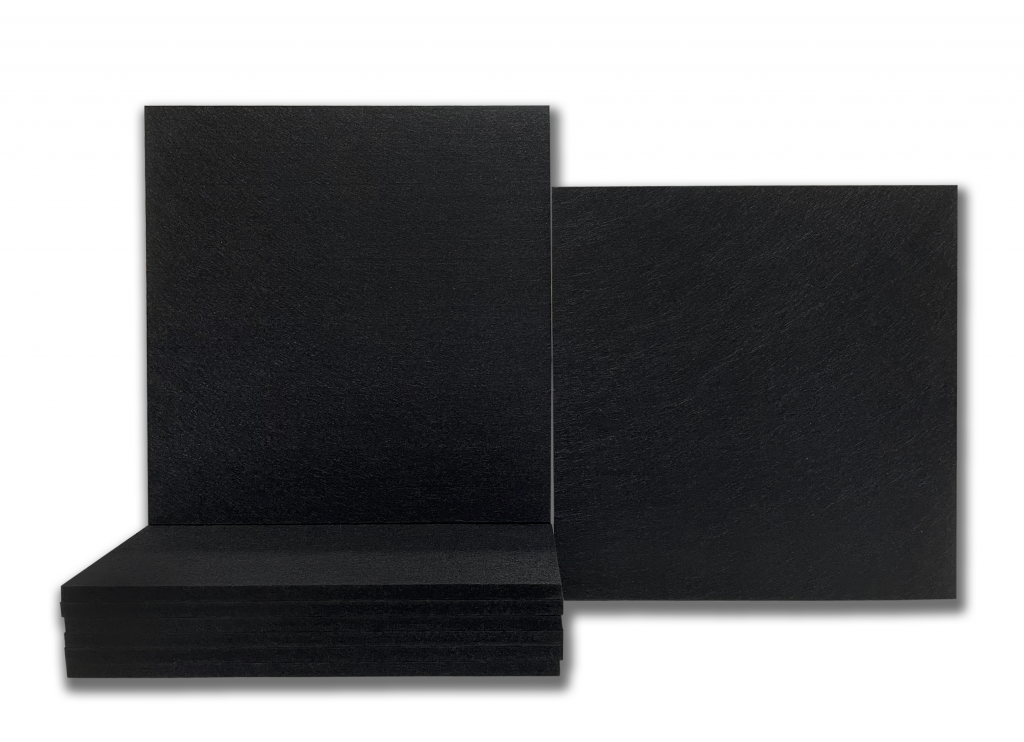
Acoustic foam is a type of soundproofing material commonly used in recording studios and home theatres to reduce unwanted echoes. By absorbing sound waves, acoustic foam can minimize noise and reverberation in a given space. The foam is made from a porous, open-celled material such as polyurethane that is usually covered with a vinyl or fabric material. The foam is typically available in various shapes and sizes, allowing for it to be installed for a variety of purposes.
Noise Reduction for Peace and Privacy
Acoustic foam is a great way to reduce sound levels in any space and create a more peaceful and private atmosphere. This type of foam is particularly useful if you are looking to create an area where sound is minimized, such as in a home studio or office.
Acoustic foam can be used to cover walls, ceilings and floors, as well as providing soundproofing for doors and windows. It is also a great way to reduce reverberations and echoes in a space, improving sound quality and creating a superior listening experience.
Acoustic foam is a great choice for any room where sound quality is important. Whether it’s a home recording studio, a commercial studio, or a home theatre, acoustic foam can help enhance the sound quality. It is designed to absorb sound waves and can help reduce excessive reverberation and echoing.
Similarly, acoustic foam can be used to prevent outside noise from entering a room. This means that you can enjoy peace and privacy in your home or workplace, as the acoustic foam works to dampen and diffuse sound waves by absorbing them into its specially designed structure. Acoustic foam is a beneficial tool for anyone seeking noise reduction in their space.
Improved Communication
Acoustic foam helps absorb echo and reverberation, resulting in improved sound clarity and better communication. This foam can be used in a variety of settings, from recording studios to home theatres. It is designed to absorb background noise and reflect sound waves, allowing sounds to come through more clearly in any environment.
Acoustic foam also helps reduce sound transmission, making it easier to hear and understand conversations. Thanks to its sound-absorbing properties, acoustic foam is an essential tool for anyone looking to improve the sound quality of their space.
Acoustic foam also reduces background noise, making it easier to understand conversations and focus on the task at hand. Acoustic foam is a type of soundproofing material that helps absorb sound waves and vibrations. It is designed to absorb mid and high-frequency noises, and is most often used in recording studios, recording booths, and concert halls. Acoustic foam is available in different shapes and sizes, so it can be used in a variety of spaces. It is lightweight and easy to install, making it an ideal soundproofing solution.
However, acoustic foam is not just beneficial for creating better sound quality. Acoustic foam also helps reduce fatigue in the ears and ultimately increases comfortability of the space it is used in. By reducing sound reverberations, acoustic foam helps to ensure that sound levels remain consistent which in turn reduces strain on the ears, improving overall comfort.
Acoustic foam helps to create a more controlled environment that is better suited to recording and enjoying audio and video. It works by absorbing sound waves with its unique cellular structure and redirecting them away from the listener. Acoustic foam is an effective soundproofing option that is both cost effective and easy to install. It absorbs sound waves, which helps reduce reverberation, echoes and background noise.
